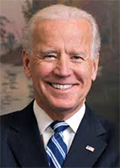Election Day Features Many Races, Much Uncertainty
Election Day in the United States is November 3 in 2020. Millions of Americans will go to the polls on that day in order to cast ballots for people running for a variety of political offices, at the federal, state, and local level.
At the federal level, all 435 seats of the House of Representatives will be up for grabs, as will one-third of the seats in the Senate. A total of 218 seats in the House is needed for a majority; Democrats currently hold 232 of those seats. A majority in the Senate is 51; Republicans currently hold 53 seats. The outcome of many congressional races and the presidential race might not be known on Election Night because the deadline for counting ballots varies by states. Some states allow the counting of ballots for a few weeks after Election Day.
Trump faced very little opposition during a brief re-election primary campaign; Vice-president Mike Pence is again Trump's running mate. Biden, who served as Vice-president under President Barack Obama, faced down more than a dozen challengers to secure the Democratic nomination and then named one of his chief rivals, Sen Kamala Harris (D–Calif.), as his running mate. She would be the country's first African-American Vice-president and also the country's first female Vice-president. She is only the second woman to run for Vice-president on the ticket of one of the two major parties; the first was Geraldine Ferraro, who ran with Walter Mondale in 1984. (Ronald Reagan won that election.) The winner of the presidential election is the person who totals the most votes in the Electoral College. A candidate who wins the popular vote tally in a state wins all of that state's electoral votes. The number of electoral votes varies by state, in a range of 3 to 55. The total number of electoral votes available is 538; the candidate who gains 270 of those votes will be the next President of the United States. Throughout the history of American presidential elections, the candidate who has tallied the most popular votes has become President most of the time. Exceptions do occur, however; for example, Trump himself won the electoral vote in 2016 despite not winning the popular vote. The same was true of John Quincy Adams in 1824, Rutherford B. Hayes in 1876, Benjamin Harrison in 1888, and George W. Bush in 2000. |
|
||||||||||||||||||||||||||||||
Social Studies for Kids
copyright 2002–2024
David White








